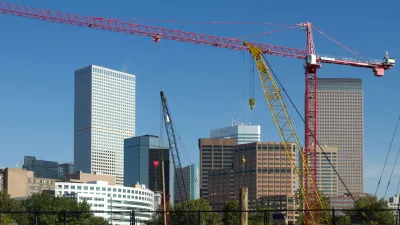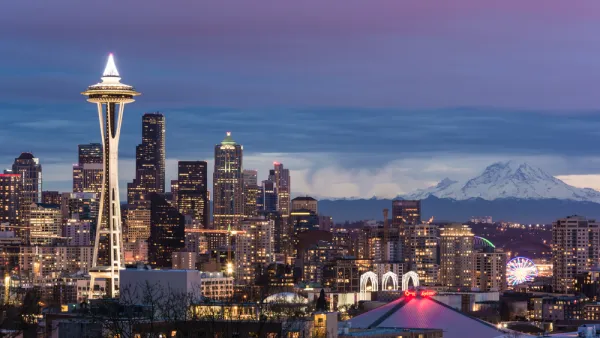Rates of growth in America's largest cities increased dramatically in 2010 but have leveled off. Suburbs are growing at nearly identical rates to center cities.

America's urban resurgence is palpable and real, certainly over the past five years. But stories about adaptive reuse and new restaurants aren't the same thing as cold, hard facts.
The Brookings Institution has crunched numbers on the past five years of U.S. Census data to conclude that the early 2010s were good years indeed for city growth, as center cities in metro areas with populations of 1 million or more grew at 1 percent per year from 2010 through 2014. Growth rates have leveled off, however, with 53 out of the country's 81 largest cities experiencing flat growth in 2014. Demographers debate whether these numbers reflect a genuine resurgent interest in urban living or whether young adults who had been living with parents have simply returned to the rental market.
The death of suburbs seems to have been prematurely announced. Suburban growth rates have slightly lagged those of their respective center cities, but rates evened up in 2014.
Of course, trends do not apply to all cities evenly. Regional distinctions are stark.
"One clue about why the slowdown is occurring can be gleaned from a look at the cities that are growing fastest. The six fastest-growing big cities include Austin, Texas; Orlando, Fla.; Durham, N.C.; Henderson, Nevada; Denver, Colo.; and Fort Worth, Texas, and each showed a recent uptick in its growth rate. These cities are located in Texas, the Southeast, and the Mountain West—Sunbelt regions that have experienced a recent re-emergence of growth that had stalled during the 2007-2009 recession and the immediate post-recession years."
FULL STORY: New Census data: Selective city slowdowns and the city-suburb growth gap

National Parks Layoffs Will Cause Communities to Lose Billions
Thousands of essential park workers were laid off this week, just before the busy spring break season.

Retro-silient?: America’s First “Eco-burb,” The Woodlands Turns 50
A master-planned community north of Houston offers lessons on green infrastructure and resilient design, but falls short of its founder’s lofty affordability and walkability goals.

Delivering for America Plan Will Downgrade Mail Service in at Least 49.5 Percent of Zip Codes
Republican and Democrat lawmakers criticize the plan for its disproportionate negative impact on rural communities.

Test News Post 1
This is a summary

Test News Headline 46
Test for the image on the front page.

Balancing Bombs and Butterflies: How the National Guard Protects a Rare Species
The National Guard at Fort Indiantown Gap uses GIS technology and land management strategies to balance military training with conservation efforts, ensuring the survival of the rare eastern regal fritillary butterfly.
Urban Design for Planners 1: Software Tools
This six-course series explores essential urban design concepts using open source software and equips planners with the tools they need to participate fully in the urban design process.
Planning for Universal Design
Learn the tools for implementing Universal Design in planning regulations.
EMC Planning Group, Inc.
Planetizen
Planetizen
Mpact (formerly Rail~Volution)
Great Falls Development Authority, Inc.
HUDs Office of Policy Development and Research
NYU Wagner Graduate School of Public Service



























